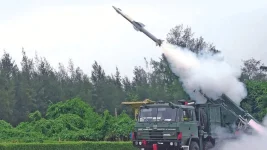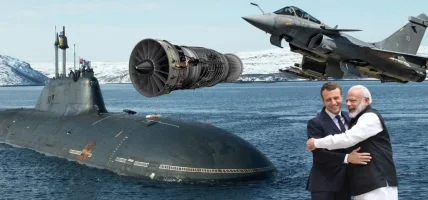- Views: 3K
- Replies: 6
The Indian Army is exploring a forward-thinking proposal to convert its ageing fleet of Soviet-era T-72 tanks into unmanned robotic combat vehicles.
This initiative aims to address the growing vulnerability of crewed tanks to modern threats like drones and advanced anti-tank missiles, particularly in high-risk operational areas.
By transforming these older platforms, the army seeks to extend their service life and enhance soldier safety on an increasingly transparent battlefield.
The T-72 main battle tank, known in Indian service as the "Ajeya" (Invincible), has been the backbone of India's armoured corps for over four decades.
With approximately 2,400 units, first inducted in the late 1970s and later produced domestically, these tanks have served in numerous conflicts and operations.
However, many of these platforms are now approaching the end of their designated 30-year service life, making them obsolete against sophisticated new weapons.
Recent conflicts, such as the war in Ukraine, have starkly illustrated the dangers faced by traditional tanks.
Inexpensive kamikaze drones and sophisticated "top-attack" munitions, like the FGM-148 Javelin missile which strikes the weaker top armour of a tank, have inflicted heavy losses on armoured vehicles.
This has forced a tactical rethink globally, with tanks often being used in static defensive roles rather than for aggressive manoeuvres.
In response, the Indian Army is already implementing significant upgrades on its newer T-72 variants.
These enhancements include modern fire-control systems, new thermal imaging sights, more powerful 1,000-horsepower engines, and improved Explosive Reactive Armour (ERA) for better protection.
Specialised add-ons like canopy slat armour are also being installed to provide a physical defence against drone attacks.
However, for the oldest tanks in the fleet, a complete conversion into Unmanned Main Battle Tanks (UMBTs) is being considered as a more viable long-term solution.
The proposal envisions these robotic T-72s being deployed in the most dangerous scenarios, such as leading an assault on fortified enemy positions or operating in areas saturated with enemy drones.
Without a human crew on board, these UMBTs could use their powerful 125mm cannons and potentially be equipped with their own integrated drones and loitering munitions to engage targets, significantly reducing the risk to human life.
This effort could benefit from the experience of the Defence Research and Development Organisation (DRDO), which is already developing an unmanned version of the indigenous Arjun tank.
A major consideration for this project is its financial viability. Sources suggest that the cost of retrofitting a single T-72 with the complex autonomous systems, sensors, and secure communication networks required for unmanned operation could be around ₹25 crore, nearly matching the price of a new tank.
Despite this significant investment, the strategic advantages are compelling. Repurposing these older platforms would maintain India's armoured strength and provide a valuable reserve of combat vehicles for any prolonged conflict.
This initiative also aligns with the army's long-term modernisation plans. The planned successor to the T-72, the Future Ready Combat Vehicle (FRCV), is not expected to enter service until after 2030 due to developmental delays.
Converting older T-72s into UMBTs could serve as a crucial interim measure, filling a critical capability gap.
This project would also boost India's "Aatmanirbhar Bharat" (self-reliant India) initiative, involving key domestic players like the DRDO's Combat Vehicles Research and Development Establishment (CVRDE) and private sector firms.
This move mirrors global trends, as nations like Russia and the United States are also actively developing robotic combat vehicles for the future battlefield.


